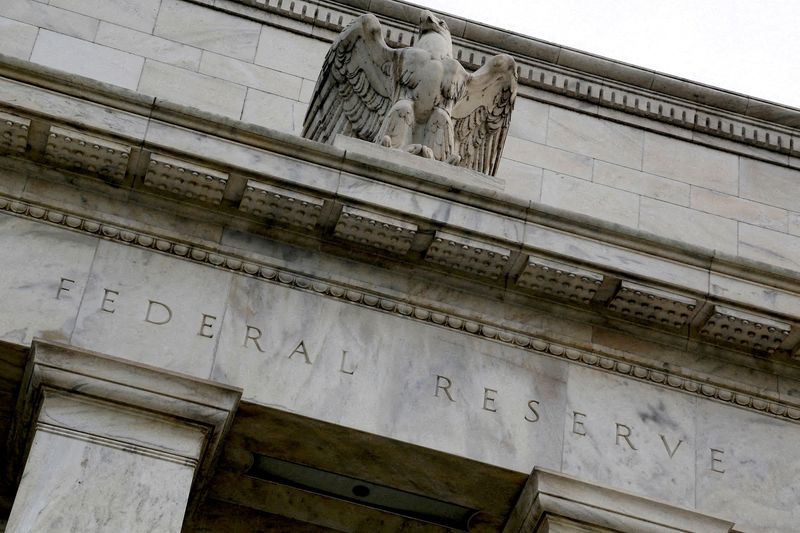By Jamie McGeever
(Reuters) - A look at the day ahead in Asian markets from Jamie McGeever.
Last March it burst through 3%, in September it smashed 4%, and now it is well above 5%. Is the Fed's terminal rate as implied by U.S. futures markets heading inexorably towards 6%?
However unlikely or unjustified you think that scenario is, it would take a brave person to bet against it right now. Recent momentum is plain to see, and the latest U.S. inflation data released on Tuesday has further emboldened the rate hawks.
What this means for Asian markets and risk appetite on Wednesday is less clear. Wall Street held up surprisingly well given the spike in borrowing costs and implied rates, while the "VIX" volatility index slumped the most in a month.
Perhaps most surprising is the Nasdaq, which jumped 0.55% for a second daily gain. The tech-heavy index is traditionally more sensitive to changes in market-based interest rates, and there is often a highly negative correlation between the index and U.S. bond yields.
But that relationship has broken down recently, so much so that the Nasdaq's simple rolling 25-day correlation with the two-year U.S. yield is the most positive since April last year.
(Nasdaq-US yield daily correlation https://fingfx.thomsonreuters.com/gfx/mkt/jnvwyxdxwvw/NZD2YCORR.png)
There may be a more straightforward if equally surprising explanation for the resilience of risky assets and investor morale: around $1 trillion of central bank liquidity pumped into the global system in recent months.
The two biggest providers have been Japan and China with over $700 billion between them, including record bond buying from Japan in January, according to some estimates. How long or if this liquidity provision continues will in large part hinge on the Bank of Japan and its new Governor Kazuo Ueda.
(G4 central bank liquidity - Apollo Global https://fingfx.thomsonreuters.com/gfx/mkt/lgpdknzwgvo/Apollo1.jpg)
It was confirmed on Tuesday that Ueda will replace incumbent Haruhiko Kuroda in early April. The yen initially rallied but was later caught in the dollar's post-CPI recovery, and hit a six-week low of 133.31 per dollar.
Investors in Asia have trade data from India and Indonesia, and South Korean unemployment figures for local direction on Wednesday, while the deepening Sino-U.S. diplomatic spat over the spy balloons could weigh on sentiment.
Here are three key developments that could provide more direction to markets on Wednesday:
- RBA Governor Philip Lowe speaks

- ECB President Christine Lagarde speaks
- U.S. retail sales (January)
(By Jamie McGeever)